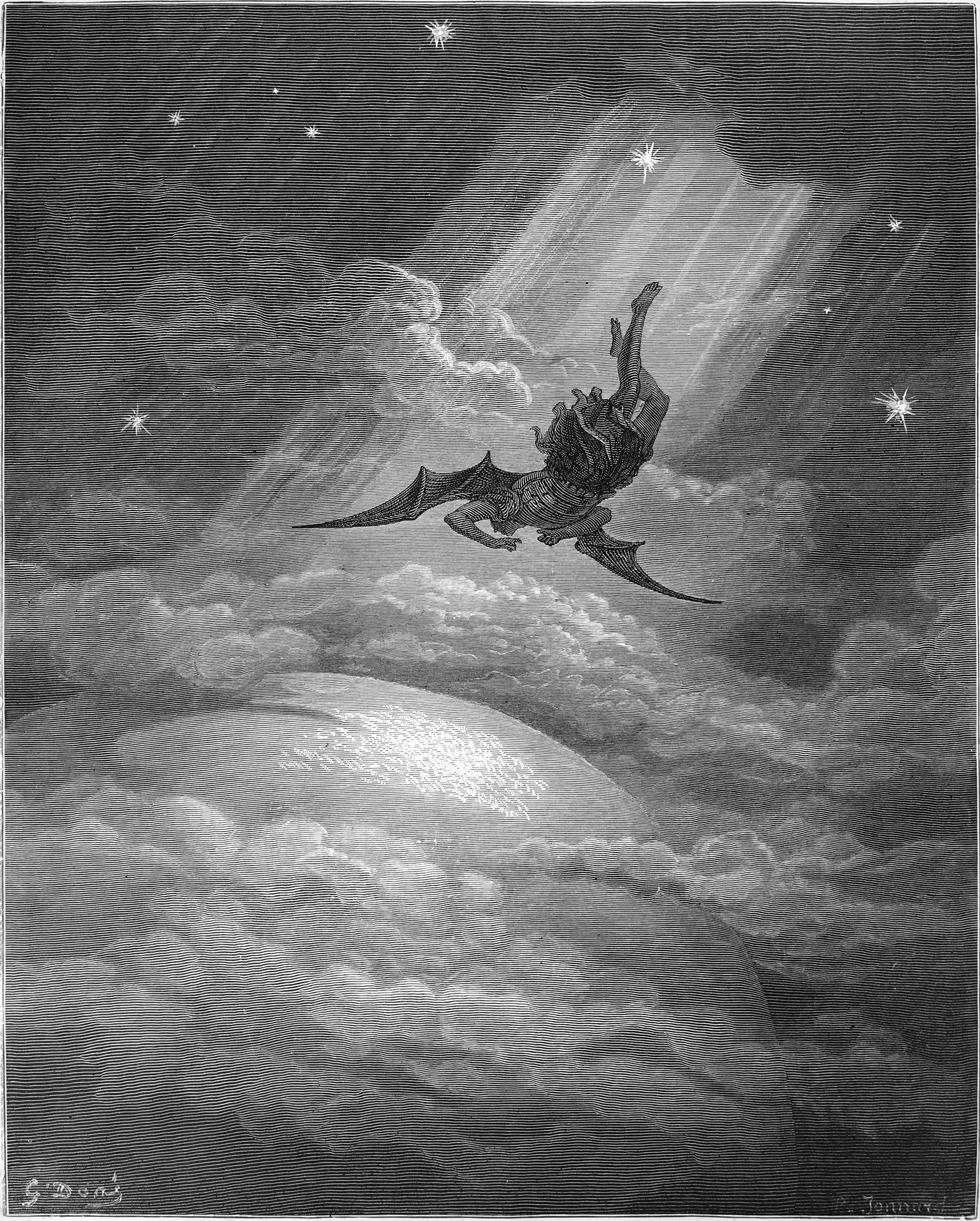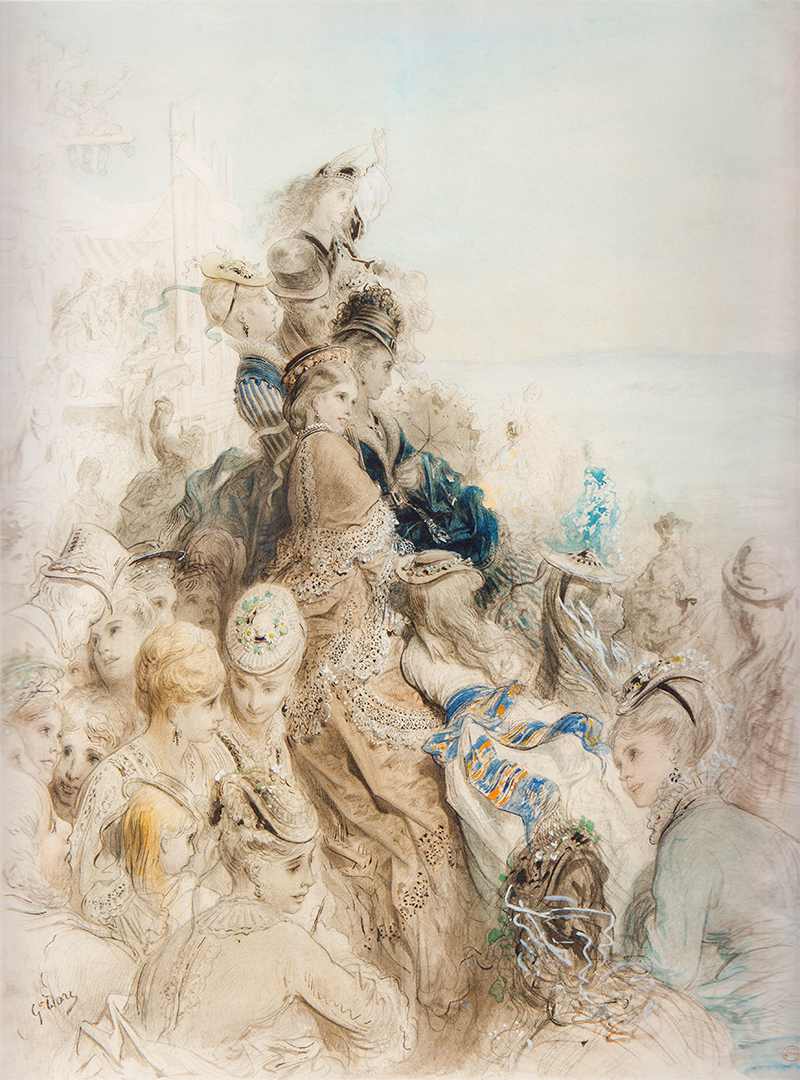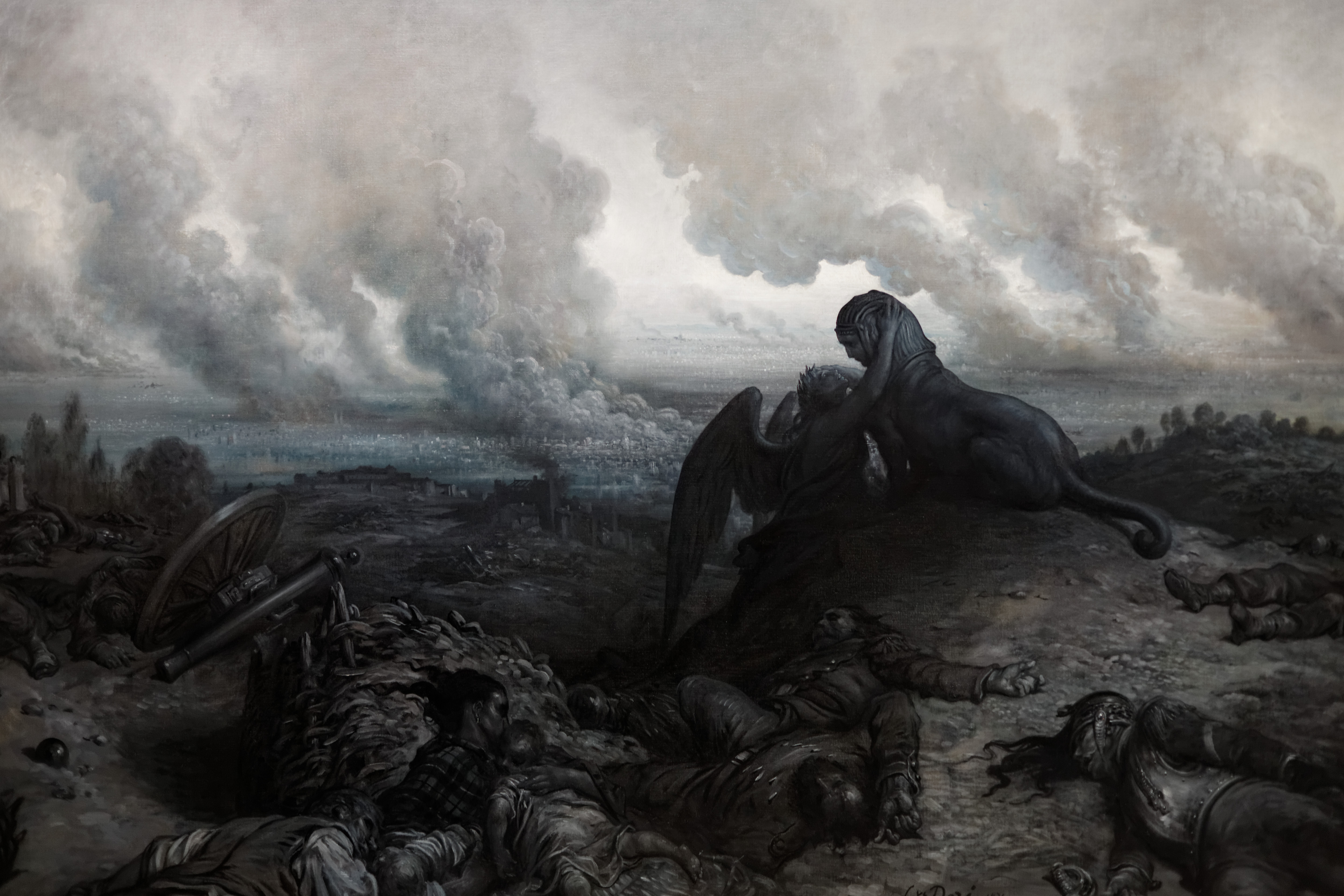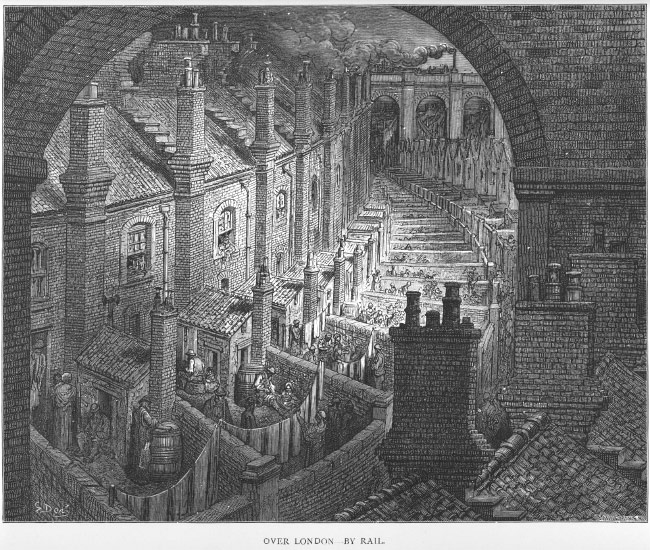 |
| Le Petit Poucet |
I went to the National Gallery exhibition
Gustave Doré (1832–1883): Master of Imagination the other day. I'm a romantic in some ways, but Doré's art was rather
too romantic for my taste. Even when he was a young child (and a prodigy) he delighted in drawing angels, demons and wild, imaginary scenes. He didn't grow out of it.
The first thing you see when you enter the Doré galleries is a 3-ton bronze vase called
The Vine, 4 metres high, covered with 3-D cherubs. The numerous putti are busy fighting off pests or pressing grapes: it's a symbolic sculpture. Against the far wall is another larger than life sculpture called
La Gloire étouffant le génie (Fame stifling genius). Fame is not only stifling the limp and naked artist; she's also stabbing him. There's a similar depiction of
Fate and Love round the corner, Fate wearing a grim look and about to snip at Love's lifeline with her big scissors. Doré didn't do things by halves and it seemed to me that he was more than a little disturbed in his mind. When his friend Nerval committed suicide, Doré drew a caricature of himself hanging on a gibbet.
 |
| The Ancient Mariner in a storm |
The subjects that appealed to him were violent, melancholic, fictional, or sentimental. Perhaps he reflected his era in this regard; perhaps he influenced it too. His style certainly had a big influence on 20th century film making, on animated films and black-and-white dramas in particular. The film makers knew his images because they'd been brought up on them. Doré was a famous illustrator of children's books, fairy stories, Bible stories. He had grand ideas of illustrating all the plays of Shakespeare but didn't get very far with this project before he died. He had come to fame as an illustrator of Rabelais. Through his engravings, he let people visualise the most melodramatic scenes from Goethe's
Faust, Milton's
Paradise Lost, Dante's
Inferno, Cervantes'
Don Quixote and Coleridge's
Rime of the Ancient Mariner. The fairy stories he chose to illustrate were not the gentle sort. The exhibition includes a gruesome depiction of the ogre in the Tom Thumb story slitting his children's throats (if you don't want to be upset by it, don't look).
 |
| Fall of Lucifer |
Probably he was bi-polar. One of the explanatory notes in the exhibition points out that Doré was obsessed by images of ascent and descent. In the exhibition are several paintings fairies, angels––the Christmas angel dropping gifts down a chimney––eagles and other aerial creatures taking off, or alighting on trees, high buildings, rocks.
Between Heaven and Earth is a picture of frogs cruelly attached to kites as food for storks, something Doré witnessed near Strasbourg. In 1874 he painted a disturbing, large scale picture of a family of acrobats, the mother holding her dying child who has fallen off a trapeze. He called this
La Victime. Outcasts are another recurrent theme, which is doubtless why the Ancient Mariner appealed to him. Towards the end of his life he painted a big canvas depicting
Le Néophyte, a novice monk out of tune with the other monks around him. He also depicted the same monk playing the organ while dreaming of a girl, whose ghostly presence is in the background. He liked mythical subjects such as Prometheus tied down on the rock and being devoured by the Eagle while in the foreground airborne and waterborne
Oceanids mourn his fate. The female nudes in this picture were influenced by
Ingres. If you ask me, they were mainly intended for ogling in the galleries, the Playboy centrefolds of their day.
I overheard someone comment, "He was one of those people who did everything."
 |
| Loch Lomond |
Sometimes, Doré experimented with landscapes without human beings in the way of the view, and he favoured "sublime," romantic views, of course, with a big stormy sky or wopping great mountains in the background, or preferably both. He visited Scotland (Loch Lomond), the Swiss alps and the Pyrenees. His rocks in the foreground are heavily daubed with oils. But in another mood he was equally adept at meticulously draftsman-like line drawings, documenting what he saw on a trip to London, for instance. His picture of the wealthy English enjoying themselves on Derby Day is an anomaly. What he mostly drew in London were the docklands, the claustrophobic slums, Newgate prison, opium dens, poverty and depravity. These dark images serve as an accompaniment to the novels of Dickens and were probably used for reference during the making of 20th century films of these novels. Doré liked the dichotomy between bursts of light and deep darkness, had probably studied Rembrandt. Eventually he used his skills to document the Franco-Prussian war and the defence of Paris, those pictures reminiscent of Goya. In the last gallery the exhibition juxtaposes Doré's work with that of the neo-Romantic British photographer,
Bill Brandt, another artist fascinated by the extremes of darkness and light.
 |
| Le Grand Derby |
 |
| L'Egnime |







No comments:
Post a Comment